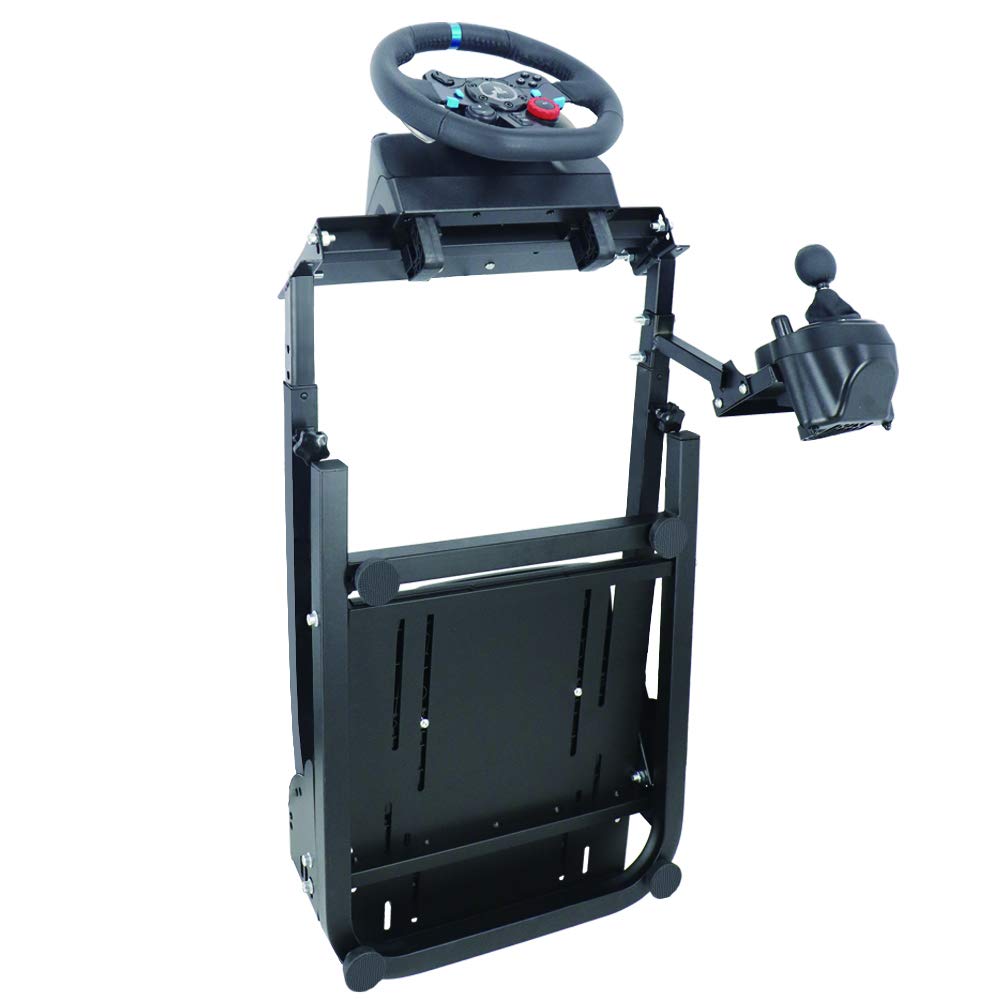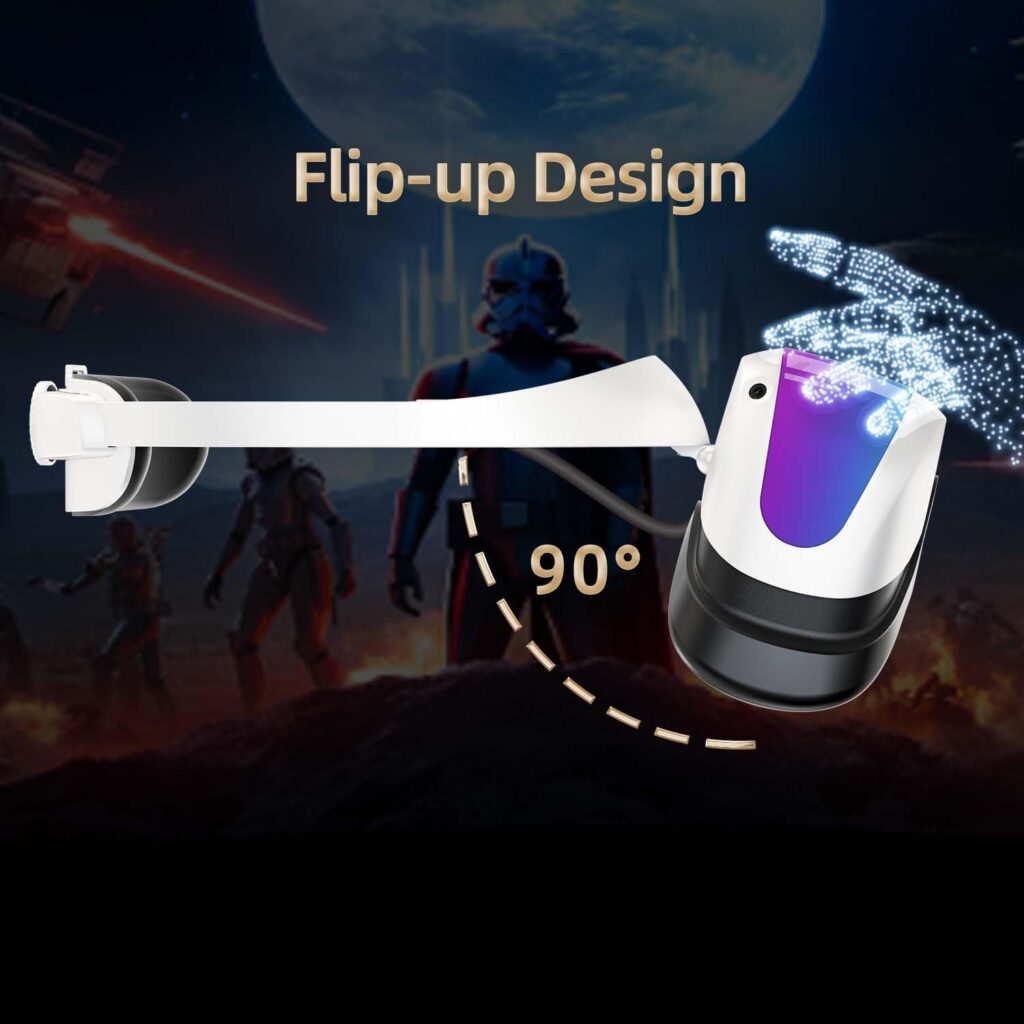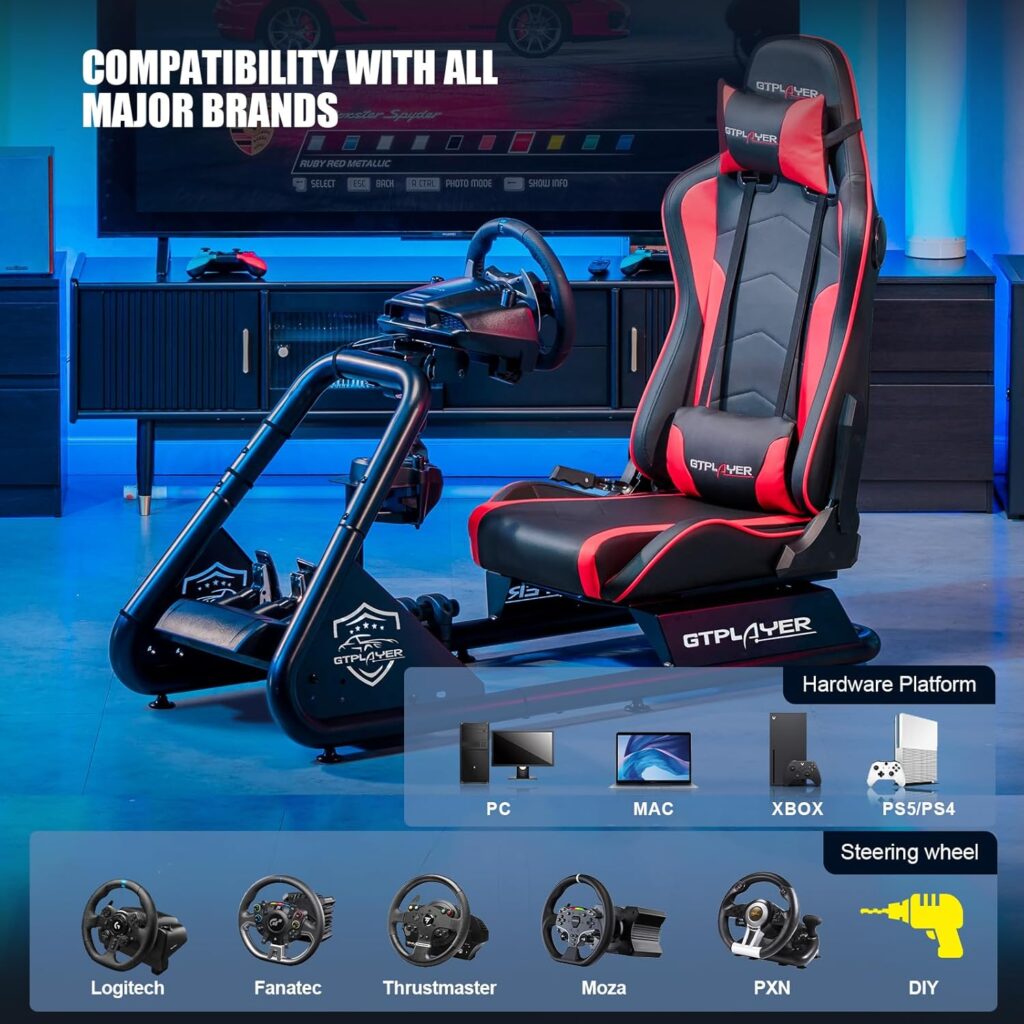If you think that simply pressing the gas pedal and steering your virtual car in sim racing is enough to win races, then you couldn't be more wrong.
Mastering the art of perfecting your racing line is the key to unlocking your full potential on the track.
It's not just about taking the fastest route through a corner, but understanding the intricacies of the racing line and applying the right techniques at the right time.
So, buckle up and get ready to discover the secrets that will transform you from a mere participant to a true champion.
Key Takeaways
- The racing line is crucial for achieving optimal speed and precision in sim racing.
- Factors such as track layout, weather conditions, and vehicle characteristics must be considered when determining the optimal racing line for each corner.
- Braking points, turn-in points, and hitting the apex accurately are essential techniques to master in order to navigate corners effectively.
- Proper apex positioning, acceleration out of corners, and positioning for the next corner are key to maintaining speed and control throughout the race.
Importance of the Racing Line
Mastering the racing line is crucial for achieving optimal speed and precision in sim racing, allowing you to maximize your performance and outshine your competitors on the virtual track. The racing line is the most efficient route through a corner, ensuring you take the shortest distance possible while maintaining the highest speed. Proper positioning on the racing line is essential as it determines your trajectory through the corner.
The racing line consists of three key points: the entry, apex, and exit. As you approach a corner, you must brake at the right moment, balancing speed and control to hit the ideal entry point. The apex is the point where you take the innermost part of the corner, allowing you to maintain the highest speed while minimizing the distance traveled. Finally, the exit is where you aim to accelerate out of the corner, utilizing the full power of your vehicle.
To achieve a fast lap time, it's crucial to follow the racing line consistently. However, it's important to note that the ideal racing line may vary depending on factors such as track layout, weather conditions, and vehicle characteristics. Therefore, it's essential to adapt and adjust your racing line accordingly.
Mastering the racing line requires a deep understanding of your car's limits and a keen sense of balance and control. By practicing and perfecting your racing line, you'll be able to navigate corners more efficiently, maintain higher speeds, and ultimately achieve faster lap times.
Factors to Consider for the Racing Line
When determining the racing line, it is essential to take into consideration various factors such as the track layout, weather conditions, and vehicle characteristics. These factors greatly influence your line selection and can determine whether you achieve the fastest lap times or fall behind the competition. To help you understand the importance of these factors, let's break them down in a table:
| Factors to Consider | Description |
|---|---|
| Track Layout | The layout of the track determines the ideal racing lines. |
| Weather Conditions | Different weather conditions affect grip available on the track. |
| Vehicle Characteristics | The characteristics of your vehicle affect corner entry, exit speed, and overall performance. |
By considering these factors, you can determine the optimal racing line for each corner. The racing line involves four key points: the braking point, turn-in point, apex, and exit point. The braking point is where you begin to slow down before entering the corner, while the turn-in point marks the spot where you start turning the vehicle towards the apex. The apex is the innermost point of the corner, and the exit point is where you start accelerating out of the corner.
Braking Points and Turn-In Points
Now that you understand the importance of factors such as track layout, weather conditions, and vehicle characteristics in determining the optimal racing line, let's delve into the crucial aspects of braking points and turn-in points.
Braking points are the locations on the track where you need to start applying the brakes to reduce your speed before entering a corner. These points are vital because they determine how fast you can enter the corner and how well you can control your car. The braking zone is the area leading up to the corner where you gradually decrease your speed.
Once you've reached the braking point, it's time to identify the turn-in point. This is the position on the track where you begin to steer into the corner after braking. The turn-in point is crucial because it sets you up for the entry phase of the corner.
As you approach the turn-in point, focus on hitting the apex of the corner. The apex is the innermost point of the corner, and hitting it correctly allows you to take a smooth and efficient line through the corner. From the apex, you can then focus on finding the optimal exit point, which sets you up for the next part of the track.
Mastering the use of braking points and turn-in points takes practice and experience. It requires the ability to adapt to different scenarios, such as different corner types and varying track conditions. By honing your skills in identifying these crucial points, you can improve your racing line, reduce lap times, and ultimately become a more competitive sim racer.
Understanding the Apex
To navigate a corner with speed and precision, understanding the apex is paramount. The apex is the point on the racing line where your car's trajectory is closest to the inside of the corner. It's crucial to hit the apex at the right time to maintain speed and control through the turn. By turning into the corner and positioning your car correctly, you can set yourself up for the perfect racing line.
The apex isn't a fixed point. It varies depending on the type of corner you're approaching and the characteristics of your car. As you approach a corner, you need to analyze its severity and choose the appropriate line to take. This will determine your route through the corner and the position of the apex.
To hit the apex accurately, you need to consider your speed, braking points, and turn-in points. As you approach the corner, brake in a straight line to slow down and then smoothly turn your car into the corner. Maintaining a proper steering angle is crucial to hit the apex and maintain control. Once you reach the apex, smoothly unwind the steering wheel and accelerate out of the corner.
Understanding the apex is a skill that separates experienced sim racers from beginners. By mastering this technique, you'll be able to optimize your racing line, maintain maximum speed, and gain an advantage over your competitors.
Techniques for Hairpin Corners
When tackling hairpin corners, there are three key techniques you need to focus on: braking, apex positioning, and acceleration.
As you approach the hairpin, brake in a straight line, gradually releasing pressure and smoothly transitioning into the turn-in.
Visualize the apex and aim to hit it accurately to maintain speed and control.
Finally, transition from the apex to the exit point by unwinding the steering and accelerating out of the hairpin.
These techniques will help you navigate hairpin corners with precision and speed in your sim racing endeavors.
Braking Techniques
For hairpin corners, mastering the art of braking is essential to navigate the tight turns with precision and control. Proper braking techniques can make all the difference in achieving a fast and smooth entry into the corner. One technique to consider is braking later, allowing you to carry more speed into the corner while still maintaining control. As you approach the hairpin, brake in a straight line to maximize deceleration. Gradually release the brake pressure as you enter the corner, aiming to hit the apex accurately. This will help you maintain speed and control through the hairpin. Be mindful of understeer or oversteer, as trail braking can help manage these issues. By focusing on the correct exit point, you can ensure optimal acceleration out of the hairpin and maintain a constant speed along the racing line.
| Braking Techniques | Tips |
|---|---|
| Brake later | Allows you to carry more speed into the corner |
| Trail braking | Helps manage understeer or oversteer |
| Hitting the apex | Maintains speed and control through the hairpin |
Apex Positioning
Mastering apex positioning is crucial for hairpin corners, as it allows you to maximize your exit speed and maintain control throughout the corner.
To perfect your technique, follow these steps:
- Lower your entry speed: Hairpin corners require a slower entry speed compared to other turns. This allows you to better manage the tight radius and maintain control.
- Identify the latest braking point: Knowing when to brake is key in setting up for the hairpin corner. Find the optimal spot to slow down before entering the turn, ensuring you have enough time to hit the apex.
- Focus on the exit: As you approach the apex, gradually reduce your steering input to unwind the wheel. This will help you carry as much speed as possible towards the exit, increasing your chances of a quick and smooth exit from the corner.
Acceleration Out of Corners
To achieve optimal acceleration out of hairpin corners, it's essential to employ effective techniques that maximize speed and control.
In sim racing, perfecting your racing line through these corners is an art that requires precision and skill. One technique to consider is trail braking, which involves lightly applying the brakes while turning in, transferring weight to the front wheels, and improving grip.
By hitting the apex accurately, you maintain speed and control, determining the point where acceleration can begin. As you navigate the corner, gradually unwind the steering and smoothly accelerate towards the exit point.
Treating hairpin turns as late-apex corners can also help you maximize exit speed. Visualize the racing line, brake in a straight line before the turn-in point, and smoothly transition from braking to turning in.
Positioning for the Next Corner
As you position yourself for the next corner, there are three key points to consider:
- Optimal entry speed: Maintaining a high entry speed allows for a smoother transition and better momentum into the turn.
- Apex placement: Placing your apex correctly ensures you take the most efficient line.
- Exit trajectory: Planning the exit trajectory sets you up for success in the following section.
Optimal Entry Speed
Achieving the perfect racing line starts with mastering the art of finding the optimal entry speed for positioning your car for the next corner. Understanding how to approach a corner with the right speed is essential in sim racing. Here are three key points to consider when it comes to optimal entry speed:
- Set up for the apex: By entering the corner at the right speed, you position your car to hit the apex, which is the point where your car is closest to the inside of the corner. This allows you to take the most efficient and fastest line through the turn.
- Smooth transition: Maintaining the optimal entry speed helps you smoothly transition through the corner and sets you up for a faster exit. It ensures that you don't lose momentum and can carry speed into the next section of the track.
- Adjust for the next corner: Each corner has its own characteristics, so it's important to adjust your entry speed accordingly. Analyze the upcoming corner and determine if you need to brake earlier or carry more speed into the entry to optimize your line through the sequence of turns.
Mastering the art of finding the optimal entry speed is a crucial aspect of perfecting your racing line in sim racing. By understanding how to position your car for the next corner, you can maximize your speed, control, and overall performance on the track.
Apex Placement
Positioning your car for the next corner starts with mastering the art of apex placement, a crucial skill that ensures optimal speed, control, and trajectory through the sequence of turns. The apex is the point at which your car needs to turn in the quickest and hits the inside of the corner. To help you understand the concept better, let's take a look at the following table:
| Corner Type | Ideal Apex Placement | Benefits |
|---|---|---|
| Hairpin | Late apex | Better exit speed for the straight after the corner |
| Sweeper | Early apex | Maximizes speed and minimizes distance traveled |
| Chicane | Double apex | Maintains momentum and minimizes time loss |
Exit Trajectory
To achieve optimal speed and positioning for the next corner, mastering the exit trajectory is essential in sim racing.
The exit trajectory refers to the path you take after the apex of a corner, setting you up for the next one.
Here are three key points to consider when working on your exit trajectory:
- Speed Control: As you exit the corner, it's crucial to maintain the right balance of speed. Too much speed can lead to a wide line and a compromised racing line for the next corner. Practice finding the sweet spot between carrying enough speed and maintaining control.
- Line Selection: Choosing the correct line as you exit the corner plays a significant role in your exit trajectory. The line should be smooth and optimized to minimize distance while maximizing speed. Experiment with different lines during practice to find the most effective one.
- Practice Consistently: Perfecting the exit trajectory requires practice and repetition. By consistently working on your exit technique, you'll develop a better understanding of how different factors, such as speed, line, and angle, affect your positioning for the next corner. The more you practice, the more natural and instinctive your exit trajectory will become.
Sections of a Corner and Their Significance
Mastering the art of sim racing requires a deep understanding of the various sections that make up a corner and their significance in optimizing your racing line. These sections include the turn-in point, apex, and exit point, which all play a crucial role in determining your trajectory and lap time.
The turn-in point is the point where you start steering your car into the corner. Finding the ideal turn-in point is essential as it directly affects your line through the corner. Experiment with different lines and adjust your steering wheel accordingly to achieve the best angle for your car.
Next, hitting the apex accurately is crucial for maintaining speed and control. The apex is the point where your car reaches the innermost part of the corner. By hitting the apex just right, you can maximize your car's acceleration out of the corner, giving you an advantage over your competitors.
Mastering the Acceleration Zone
To maximize your exit speed and achieve a strong performance on the track, it's essential to master the art of navigating through the acceleration zone. This section of the racing line is where you gradually increase your speed after hitting the apex of a corner.
Here are three key factors to consider when mastering the acceleration zone:
- Proper positioning and trajectory: As you approach the apex of the corner, make sure you position your car correctly to set up for a smooth exit. This means taking the optimal line through the corner, hitting the apex at the right moment, and positioning your car on the track to maximize your speed on the exit.
- Smooth throttle application: Gradually unwind the steering as you exit the corner and smoothly apply throttle to optimize acceleration in the acceleration zone. Avoid sudden or aggressive throttle inputs that can cause loss of traction or spinning out.
- Balance control and aggression: Mastering the acceleration zone requires finding the right balance between maintaining control of your car and pushing for aggressive acceleration. It's important to be confident and assertive with your throttle inputs, but also mindful of maintaining stability and control throughout the zone.
Tips for Trail Braking and Gear Changes
Ready to take your sim racing skills to the next level? In this section, we'll delve into the essential tips for mastering trail braking and gear changes.
These techniques are crucial for maintaining control, improving grip, and maximizing acceleration as you navigate the twists and turns of the racing circuit.
Trail Braking Techniques
Optimize your cornering performance and achieve faster lap times by honing your trail braking techniques and mastering gear changes. Trail braking, the art of gradually releasing the brakes as you turn into a corner, can help you maximize speed and maintain control through every twist and turn.
Here are three essential tips for mastering trail braking and gear changes:
- Brake earlier: To execute a successful trail braking maneuver, it's crucial to brake earlier than you'd for a conventional corner. This allows you to maintain a higher entry speed and carry more momentum onto the straight line.
- Smooth transition: As you release the brakes while turning, focus on maintaining a smooth transition to the power delivery. This will optimize weight transfer and grip, enabling you to hit the clipping point with precision.
- Timing is key: Coordinate your gear changes with your trail braking technique. Shifting gears at the right moment can enhance stability and control, ensuring a seamless exit of the corner.
Efficient Gear Changes
Mastering efficient gear changes is essential for maximizing your performance during trail braking and achieving faster lap times.
To improve your gear changes, it's crucial to practice and gain experience in track driving. As a racing driver, you need to anticipate gear changes before entering a corner to maintain optimal speed and control.
Smooth and precise gear changes are necessary to avoid unsettling the car during trail braking. Utilize the heel and toe shifting technique to match engine revs for seamless gear changes.
Additionally, adjust your gear changes based on the type of corner and the characteristics of your car to maximize acceleration. Experiment with different gear change points and techniques to find the most efficient approach for each corner.
Perfecting the Post-Apex Acceleration
To maximize your speed and control coming out of a corner, it's crucial to perfect your post-apex acceleration technique. This is the key to achieving the fastest possible lap times and maintaining a competitive edge in sim racing.
Here are three important factors to consider when perfecting your post-apex acceleration:
- Gradually increase throttle: As you approach the apex of the corner, you should start easing back on the throttle. However, once you hit the apex, it's time to gradually increase throttle input. This allows you to capitalize on the available grip and accelerate smoothly out of the corner.
- Reduce steering lock: To maintain control and maximize speed on the exit, it's important to reduce steering lock as you accelerate post-apex. This helps to minimize tire scrub and allows the tires to maintain better traction, enabling you to carry more speed through the corner.
- Utilize the entire track width: To optimize your acceleration out of the corner, use the entire width of the track. This allows you to take advantage of the longest possible racing line and make the most of the available grip. By positioning your car towards the outside of the track, you can maximize your exit speed and maintain momentum.
Frequently Asked Questions
How Do You Get the Perfect Racing Line?
To get the perfect racing line, it's all about mastering cornering techniques.
Start by knowing your braking points, so you can slow down before the turn-in point.
Then, focus on finding the apex, that sweet spot that lets you maintain speed through the corner.
Smooth throttle control is key for a seamless transition towards the exit point.
Remember, different tracks require different racing lines, and understanding racing dynamics is crucial.
What Is the Optimal Line in Racing?
The optimal racing line is crucial in racing. It begins with understanding braking points, nailing apexes, and grasping track camber. Finding the ideal line for each corner is key. It affects lap times and requires adjustments for different weather conditions.
Techniques like smooth pedal transitions and gradual steering help improve corner exit speed. Analyzing professional racing lines can also provide valuable insights.
Mastering the racing line is an art that can make all the difference on the track.
How Do I Get Better at Racing My Sim?
To get better at racing your sim, focus on improving reaction times, mastering braking techniques, and understanding tire management.
Analyze race data to identify areas for improvement and enhance car control skills.
Practice overtaking strategies and perfect cornering techniques to shave off precious seconds.
Additionally, develop a strong mental game to stay focused and perform at your best.
With dedication and practice, you'll see your sim racing skills soar to new heights.
Does Sim Racing Improve Real Racing?
Sim racing absolutely improves real racing! The skills you develop in the virtual world can transfer to the real track. Sim racing enhances your racecraft, sharpens reaction times, and mentally prepares you for the challenges of racing.
It's a cost-effective training tool for aspiring racers, giving you the chance to explore different tracks and perfect your strategies. However, it's important to understand the limitations of sim racing and how it differs from real-life scenarios.
But overall, sim racing can have a significant impact on your performance and decision-making in real racing situations.
Conclusion
Now that you understand the art of perfecting your racing line in sim racing, put your skills to the test and see the results for yourself.
By following the racing line and mastering its components, you can significantly improve your performance on the track.
So, get behind the wheel, practice, and explore the truth of this theory firsthand.
Remember, continuous practice and feedback will help you refine your technique and become a true master of the racing line.
Happy racing!




